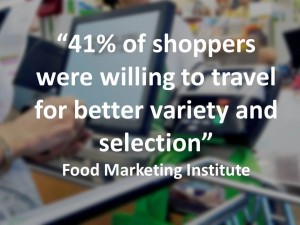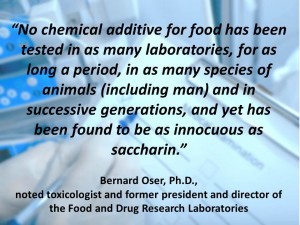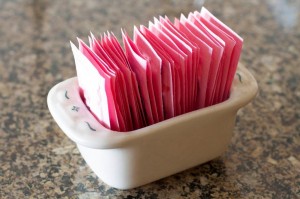On the heels of a landmark decision in Canada to allow saccharin sweeteners to be used in a wide range of food products, Health Canada recently approved the zero-calorie sweetener to be available in the familiar pink packets or in bulk in grocery stores, restaurants and other outlets. By lifting restrictions on saccharin, Canada joins more than 100 countries and global health organizations – including the United States and the World Health Organization – who have long allowed the sweetener as a safe and healthy alternative to sugar.
Variety Important to Consumers
The addition of saccharin to product shelves is a bolster for retailers, as product variety holds great importance to consumers. Food Marketing Institute’s 2012 survey (PDF) found that beyond convenience, variety of selection was important. (See graphic at right.) Coupled with 54% of consumers’ preferring one-stop shopping, stores that stock variety are likely to gain greater store loyalty.
Historically, in the United States, brands of saccharin in pink packets have typically been among the top sellers within the alternative sweeteners market, next to sucralose (yellow), aspartame (blue) and newcomer stevia (green) packets.
Move Follows 2014 Approval of Saccharin as an Ingredient for Manufacturers
The move comes roughly two years after Canadian health officials approved the use of saccharin, calcium saccharin, potassium saccharin and sodium saccharin to be used as an ingredient in various foods and beverages. Unlike the previous government action, the most recent one is far more sweeping and would allow for saccharin to be sold directly to consumers in grocery stores, mass merchandisers, restaurants and other outlets.
Saccharin’s History of Safety
Saccharin is one of the most studied ingredients in the food supply, and extensive research has long supported the conclusion that saccharin is safe for consumption. Health-conscious consumers around the world embrace the sweetener as a healthy alternative to sugar.
For additional information about saccharin, please visit http://saccharin.ca/.

 Decades of Research Backs Safety of Saccharin
Decades of Research Backs Safety of Saccharin

 has been listed as an approved food additive in table-top sweeteners. The lifted restrictions on saccharin now grant consumers unlimited access to the calorie-free sweetener – clearing the way for healthier eating habits and giving Canadians with dietary restrictions (such as people with diabetes) more options. The approval of saccharin for use in tabletop applications supports the safety of the sweetener, which has been reaffirmed by more than 100 countries around the world as well as the World Health Organization.
has been listed as an approved food additive in table-top sweeteners. The lifted restrictions on saccharin now grant consumers unlimited access to the calorie-free sweetener – clearing the way for healthier eating habits and giving Canadians with dietary restrictions (such as people with diabetes) more options. The approval of saccharin for use in tabletop applications supports the safety of the sweetener, which has been reaffirmed by more than 100 countries around the world as well as the World Health Organization.